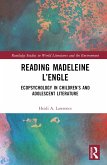Symbols and tropes of liquidity have long been connected to notions of the feminine and, therefore, with orthodox constructions of femininity and womanhood. Underpinning these ideas is the vital importance of water as life force, which has given it a central place in cultural vocabularies worldwide. These symbolic economies, in turn, inform the discourses through which positive or negative associations of women with water come to bear impact on the social positioning of female gendered identities.
Women and Water in Global Fiction brings together an array of studies of this phenomenon as seen in writing by and about women from around the world. The literature explored in this volume works to make visible, decodify, celebrate, and challenge the cultural associations made between female gendered identities and all kinds of watery tropes, as well as their consequences for key issues connected to women, society, and the environment. The collection investigates the roots ofsuch symbolisms, examines how they inform women's place in the socio-cultural orders of diverse global cultures, and shows how the female authors in question use these tropes in their work as ways of (re)articulating female identities and their correlative roles.
Women and Water in Global Fiction brings together an array of studies of this phenomenon as seen in writing by and about women from around the world. The literature explored in this volume works to make visible, decodify, celebrate, and challenge the cultural associations made between female gendered identities and all kinds of watery tropes, as well as their consequences for key issues connected to women, society, and the environment. The collection investigates the roots ofsuch symbolisms, examines how they inform women's place in the socio-cultural orders of diverse global cultures, and shows how the female authors in question use these tropes in their work as ways of (re)articulating female identities and their correlative roles.








